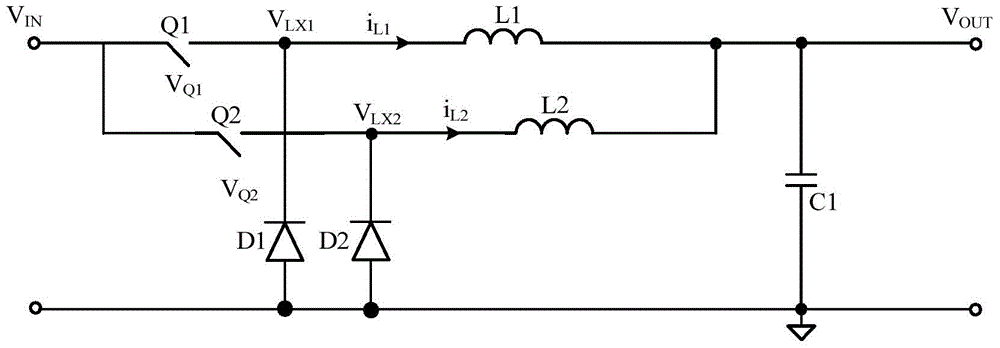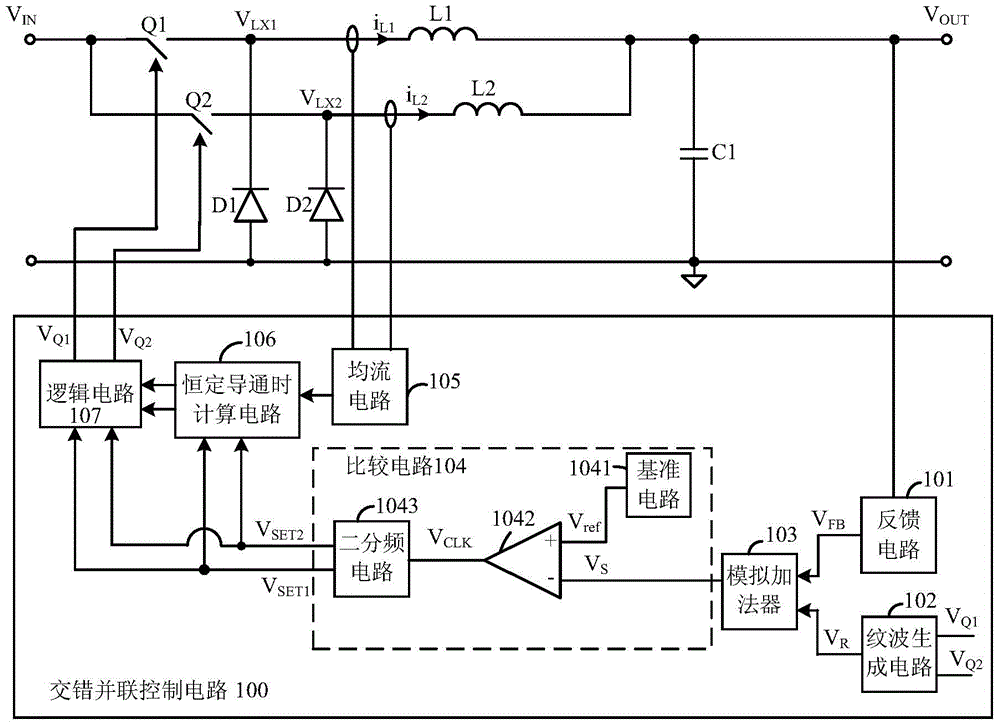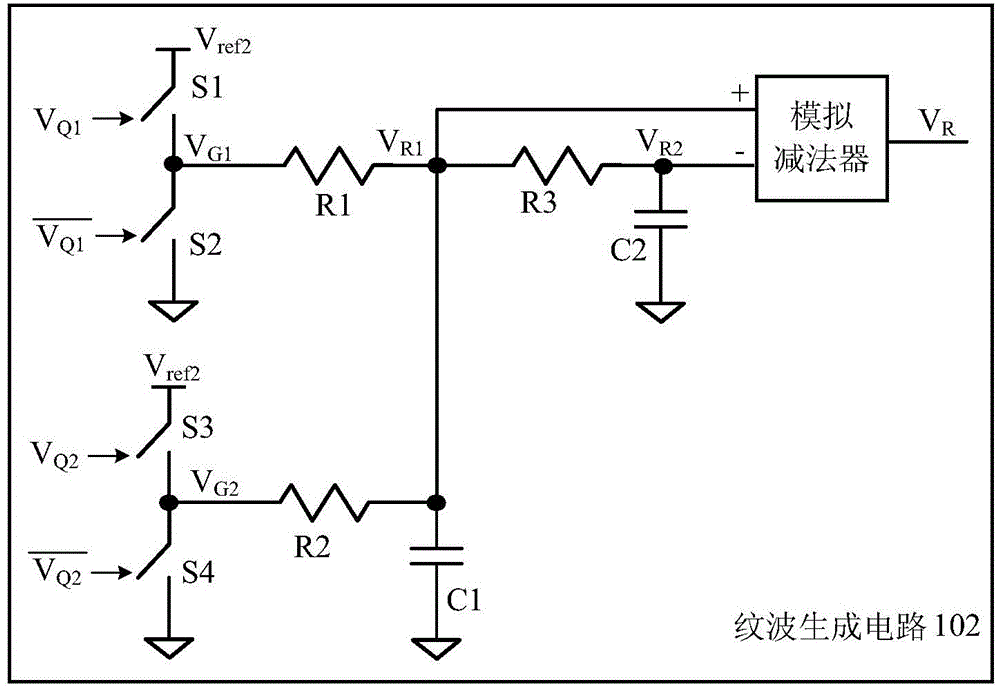Interleaved switching power supply and control method thereof
A switching power supply, interleaved technology, applied in the field of interleaved parallel switching power supply and its control, can solve the problems of poor dynamic response, complicated compensation design, etc.
- Summary
- Abstract
- Description
- Claims
- Application Information
AI Technical Summary
Problems solved by technology
Method used
Image
Examples
Embodiment Construction
[0050] Several preferred embodiments of the present invention are described in detail below with reference to the accompanying drawings, but the present invention is not limited to these embodiments. The present invention covers any alternatives, modifications, equivalent methods and arrangements made within the spirit and scope of the present invention. In order to give the public a thorough understanding of the present invention, specific details are described in detail in the following preferred embodiments of the present invention, and those skilled in the art can fully understand the present invention without the description of these details.
[0051] refer to figure 2Shown is a circuit block diagram of a parallel interleaved switching power supply according to the present invention. In the embodiment of the present invention, the parallel interleaved switching power supply includes two parallel step-down power stage circuits, but is not limited to this. The power suppl...
PUM
 Login to View More
Login to View More Abstract
Description
Claims
Application Information
 Login to View More
Login to View More - R&D
- Intellectual Property
- Life Sciences
- Materials
- Tech Scout
- Unparalleled Data Quality
- Higher Quality Content
- 60% Fewer Hallucinations
Browse by: Latest US Patents, China's latest patents, Technical Efficacy Thesaurus, Application Domain, Technology Topic, Popular Technical Reports.
© 2025 PatSnap. All rights reserved.Legal|Privacy policy|Modern Slavery Act Transparency Statement|Sitemap|About US| Contact US: help@patsnap.com



